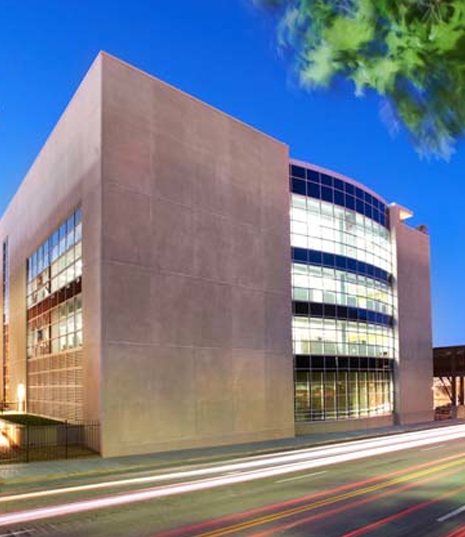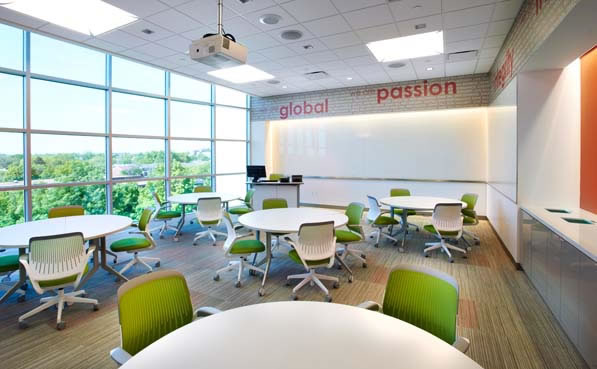Nestlé-Purina’s LEED-certified Danforth Learning Center draws environmentally minded employees and responds to consumer attitudes
this article originally appeared in gb&d Magazine January/February 2014 issue.
By RUSS KLETTKE Photography: JAD RYHERD
In the competition for talented workers, Nestlé-Purina PetCare Company has a natural advantage: employees can bring their dogs to work. The dogs make sense—the company markets some of the most recognized dog and cat food brands in America—but this St. Louis firm believes its commitment to sustainable buildings is a draw as well.
“Sustainable building attributes reflect our corporate culture, which helps us to attract top talent,” says Diane Herndon, manager of sustainability at Nestlé-Purina. Herndon cites company studies that show a high percent of pet owners care about the environment. And as the World Green Building Council reported in “The Business Case for Green Building,” published in 2013, multiple corporate studies reflect strong employee preferences to work in green buildings.
The company responds with Earth-friendly manufacturing and distribution processes: reduced water use, reduced energy use, use of renewable energy at several manufacturing facilities, participation in the EPA’s SmartWay transportation program, and smarter and lighter packaging materials. Overall, energy management programs have reduced consumption at the headquarters by 10 percent over the past decade.
The campus has a wide range of buildings—research labs, offices, and a pilot plant, including two that are more than 100 years old—on 55 acres in downtown St. Louis. The newest is the $15 million LEED Gold-certified Danforth Learning Center building, designed by Weston E.I.D., an architecture firm that has been building energy-efficient and solar-powered homes since the 1980s. “When Nestlé-Purina approached us for the Danforth Center, they requested LEED certification,” says Craig Weston, principal of Weston E.I.D. “When we evaluated our first internal LEED checklist, we knew it would be possible to achieve LEED Gold.”
The Danforth Center isn’t the only LEED-certified structure built by Nestlé-Purina—the 84,000-square-foot, LEED Silver Purina Event Center, a pet show venue, opened at Purina Farms in Gray Summit, Missouri, in 2010—and Nestlé-Purina’s St. Louis environmental footprint extends beyond new construction. “All buildings are linked through our Integrated Energy Control System,” says Gene McCoskey, the managing director of site services, whose group oversees the downtown headquarters campus and Purina Farms. “If you can measure real-time energy use by building and review trends, you can make effective adjustments in how energy is used. We are also currently piloting new lighting control technologies and installing energy-efficient office and parking lot lighting.”
On any given day, an estimated 70 to 80 dogs can be found at Nestlé-Purina, in offices or playing in an on-site dog park. But it is humans who make up Nestlé-Purina’s Green Paws program, which is composed of about 200 employee-volunteers who raise awareness about sustainable living among their colleagues, tend to urban gardens, and collect recyclables at the nearby St. Louis Cardinals’ Busch Stadium. With such a large group of volunteers, these employees suggest that it is the people inside the buildings, not just the structures, that make an enterprise wholly sustainable.
A Message from LANDCO Construction
LANDCO is proud to have collaborated with Nestle Purina PetCare Company in “building their vision” of a sustainable, state-of-the-art facility, designed specifically for people to collaborate and learn. Key involvement in the planning process, coordination of critical construction trades, attention to detail, and quality craftsmanship were delivered to accomplish LEED Gold certification by the USGBC. We look forward to future projects combining our firms’ respective expertise in sustainable design and construction practices.

